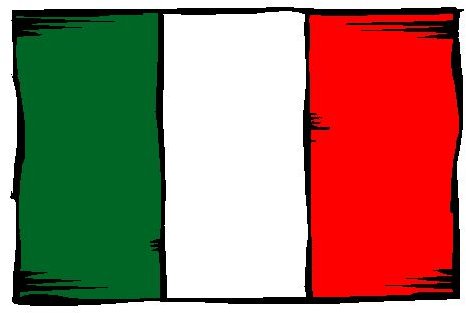Teach Italian to Children: Using Animals, Adjectives, and Gender: Third in a Series
Memorizing Gender
Gender is usually not related to the meaning of the noun (for example, “la pasta” is feminine and “gli spaghetti” is masculine), and so can
only be learned by memorization. The noun’s article gives you the best clue about the noun’s gender, which is why it’s a good idea to learn articles along with new nouns. Most nouns will give you a clue, too: Nouns that end in “a” are usually feminine, and nouns that end in “o” are usually masculine. Many nouns, however, do not end in “a” or “o,” so their gender must be memorized. Please refer to the article Italian Words and Their Gender for more information about masculine and feminine nouns.
When using adjectives in Italian, the adjective changes to match the gender of the noun. For example, you say “la mela rossa,” (“the red apple”) but “il pomodoro rosso” (the red tomato). In this lesson, your child will practice familiar food and color vocabulary, and continue to use the verb “piacere” to make longer and more creative sentences.
Getting Ready
Review food and color words, then go to Animals: Teaching Children Italian: Part 4 to learn some words for animals and how to pronounce them. Make sure you and your child are familiar with the genders of the animal and food words, because Italian adjectives change according to the nouns they refer to. Give the child some examples of different genders of words with adjectives, starting with singular nouns, for example, “la gallina gialla” (“the yellow chicken”), “il cavallo nero” (“the black horse”), “la gallina nera” (“the black chicken”), and “il cavallo giallo” (“the yellow horse”).
The Lesson
Print some blank pictures of animals and pictures of food for your child to color, and provide some crayons. Before she starts coloring, use the pictures to review the vocabulary, and encourage older children to write the Italian words under the pictures. Have the child color in the pictures, making sure she does at least 5 animals and 5 food pictures. As she’s working, encourage her to say what she’s coloring, for example, “i broccoli verdi” (“the green broccoli”) or “il cane blu” (“the blue dog”).
Using the pictures she’s colored, encourage the child to make sentences with the verb “piacere,” for example, “A la gallina rossa non piace il pesce nero” (“The red chicken doesn’t like the black fish”) or “Al cavallo bianco piace la pera grigia” (“The white horse likes the grey pear”) (please note that the “al” in the previous sentence is the preposition “a” plus the article “il,” which become one word in Italian). Encourage your child to also practice the indirect object pronouns from the previous lesson with questions and sentences, for example, “Vi piace il gatto giallo? No, non ci piace il gatto giallo. Mi piace il gatto blu.” (“Do you like the yellow cat? No, we don’t like the yellow cat. We like the blue cat.”
Practice Suggestions
For further practice, watch cartoons together with your child and encourage her to describe the animals she sees. If your child can read and write, you can also invent an Italian “Animal Safari” by making a list of different colored animals and having her find pictures of them on the Internet. You can print the pictures, and have her write the Italian descriptions on them.
This post is part of the series: Italian For Children
This series of articles gives parents a fun way to teach Italian to kids at home. Each lesson has a small grammar point, some new vocabulary, and practice suggestions. Links to Italian media files are also provided.
